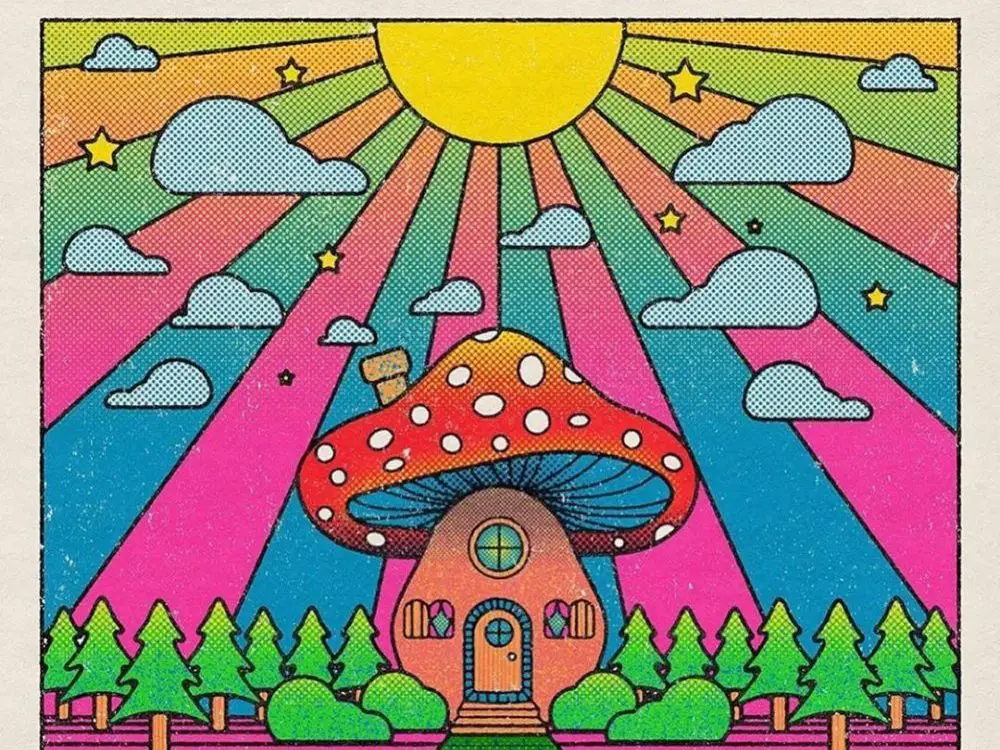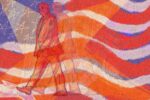Millennials and Gen Z alike have grown up hearing about the trippin’ hippies of the 1960s. For many, drugs like LSD remain a tie-dyed, kaleidoscope-filled idea most commonly associated with the decade. However, psychedelics aren’t as stuck in the ’60s as one might think. There are still countless people experimenting with psychedelics today, and with a number of qualified experts and investigators engaging in extensive research on various hallucinogenic drugs, it is likely that it will only become that much more common.
Surprised? Intrigued? Scared? The good news is that you don’t need to be a qualified scientist or even come within a 10-mile radius of the drug to learn about LSD. The 2020 Netflix documentary, “Have a Good Trip: Adventures in Psychedelics” is a one hour and 25-minute film dedicated to exploring the world of hallucinogenic drugs. Written and directed by Donick Cary, the documentary provides its audience with a wide variety of anecdotes, opinions, tips, facts and myths about psychedelics.
With a resemblance to “Bill Nye the Science Guy,” the documentary successfully balances both humor and knowledge. While the use of hallucinogens is controversial (and not to mention illegal in many places around the world), “Have a Good Trip” attempts to give viewers unbiased information to assess the pros and cons of getting high, or tripping, on hallucinogenic drugs.
Perhaps the most alluring aspect of the documentary is the impressive array of celebrities willing to share their experiences with psychedelics. With names like Sting, Sarah Silverman, Carrie Fisher, Nick Kroll, Anthony Bourdain and A$AP Rocky, “Have a Good Trip” becomes engaging, personable and modern. Each star gives a personal anecdote, along with some hard-learned lessons they feel are important to pass on.
From the start of the film, it becomes apparent that there are a variety of ways that people might experience tripping. Some stories are hilarious. For example, writer and actor Nick Kroll joins the cast to recount the day he took “magic” mushrooms at the beach with his buddies. He explains that he knew the drugs had kicked in when his friends covered him in seaweed and he didn’t care. As a matter of fact, he loved it.
“I became ‘The Kelp Monster.’ I couldn’t even fathom wanting to remove this f—ing detritus from the sea,” said Kroll. “The next day I woke up covered in red welts because I had been covered in sea kelp for 45 minutes.” Kroll’s story is interrupted by his own laughter and intentional self-deprecation.
The tone shifts in an interview with singer and songwriter Sting, who seems to have had a much more spiritual experience.
Sting recalls a time when he took peyote (a small species of cactus with hallucinogenic properties and a rich history of spiritual and medicinal usage) and found himself in a barn near his house assisting a pregnant cow in giving birth.
“When we finally got the steer out, his mother breathed a sigh of relief, and for me, the entire universe had cracked open. It was like the meaning of life,” Sting explained. “I think what the psychedelic experience does is it takes the ‘me’ out of ‘me and it’. You realize that everything […] is connected.”
While most of the interviewees in “Have a Good Trip” seem to feel enlightened by, or at the very least, have enjoyed psychedelics, there is a noticeable effort to show both sides of the coin. Most of the celebrities have a metaphorical asterisk attached to their stories and the documentary makes sure to emphasize these addendums with viewers’ safety in mind.
For example, comedian Sarah Silverman thinks it’s an important rule to never drive while tripping. While this may seem obvious, she and many others give specific details of how dangerous it can be.
Silverman confesses about a time when her friend drove her home while the pair tripped on acid. “We get to a stoplight […] and he has forgotten how to drive. We were thinking, ‘How do cars work? We know how cars work?’”
Although there is a consistent comedic edge to the majority of the interviews, it is pieces of advice like Silverman’s that provide sincerity and thoughtfulness to the film. Some tips might be as small as to never look in a mirror while tripping, while others might be as big as to never experiment with psychedelics at all.
Actor Ben Stiller describes his bad experience with LSD. Unlike Sting, Kroll and many others, Stiller’s piece of advice is to forgo hallucinogenic drugs altogether.
“I was hoping for some sort of psychedelic revelation […] with some amazing imagery and some sort of opening into some other form of consciousness,” says Stiller. “It was not that at all. It was just fear and anxiety being amplified. Who needs that?”
Stiller’s warning proves that, while viewers can certainly learn a lot by listening to the film’s interviewees, there isn’t one consistent experience that all people have while tripping.
Along with the opinions of various stars, there are also a handful of qualified experts to give their two cents. Most notably is Dr. Charles Grob, a professor of psychiatry at UCLA. Grob is an investigator of hallucinogens as medicine and focuses much of his research on the way that psychedelic drugs can treat mental illness.
With published work, including an FDA-approved experiment helping cancer patients with reactive anxiety, Grob is one of the many scientists working to understand the way certain stigmatized drugs — if used correctly — may actually open a world of healing opportunities.
“I think it was a shame that the prior generation of psychedelic investigators were abruptly stopped in their tracks because they were onto some very important discoveries,” said Grob. He and many others hope for a future with an increase in safe and approved research of psychedelic drugs.
Whether or not you want the same future as Grob is up to you. In the meantime, “Have a Good Trip: Adventures in Psychedelics” is the perfect documentary for those interested in learning about the world of psychedelics from a distance.
Without officially approving of those who choose to experiment with hallucinogens, the film offers an unbiased insight into psychedelic drug use. The only clear stance made by the people of the film is this — whether high on acid or on life, they want you to have a good trip.

















